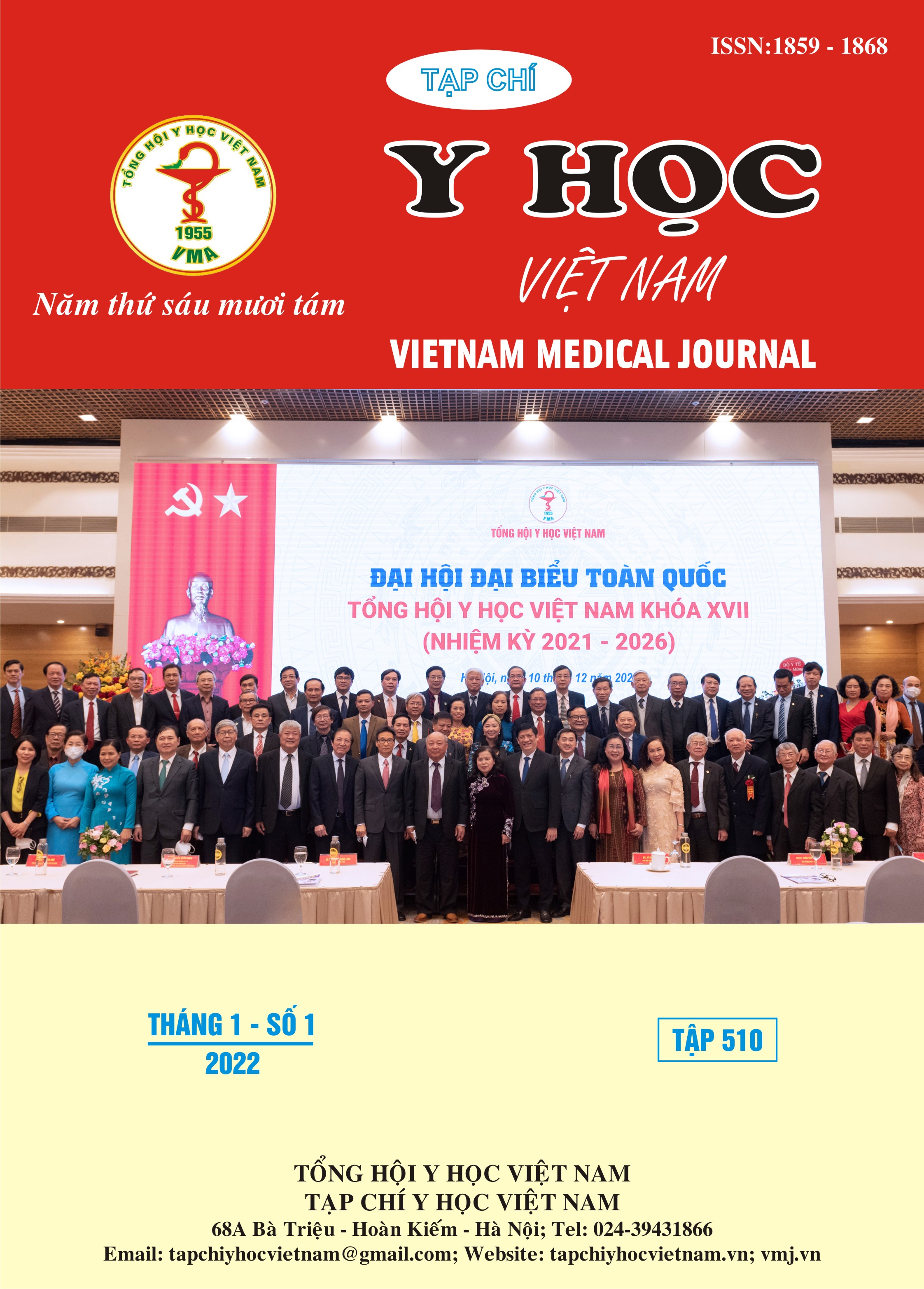SUMMARY STUDY ON THE ROLE OF CHEST MAGNETIC RESONANCE IN DIAGNOSING NON-SMALL CELL LUNG CANCER AT HAI PHONG INTERNATIONAL GENERAL HOSPITAL 2019 - 2020
Main Article Content
Abstract
Objectives: This study aims to: 1-Describe clinical features and computed tomography images, chest magnetic resonance in the diagnosis of non-small cell lung cancer at Hai Phong International General Hospital, 2019 up to 2020. Subjects and methods: The study subjects included 43 patients diagnosed at Hai Phong International General Hospital during the period from January 2019 to December 2020, in accordance with the study criteria. The research method was descriptive cross-sectional, prospective, non-probability sampling. Research facilities included Avanto Siemens CT scanner (Germany) 1.5 Tesla with an agreed procedure and carefully trained. The data collected in the study were processed according to the SPSS 22.0 medical statistical algorithm. Results and Conclusions: The study included 43 patients, the proportion of men was higher than that of women (2.1/1), the mean age was 64.4 ± 12.6. The most common functional symptoms: dry cough 39.5%, cough with white or white sputum in 27.9%, chest pain 23.3%, weight loss 23.3%. The most common physical symptoms: triple reduction syndrome accounted for 16.3%, moist crackles in the lungs 23.3%, clubbing fingers 7%. On MRI, the mean size of primary tumor in 43 cases was 39.7 ± 18.7 mm. The largest mass was 92 mm, the smallest was 8.9 mm. On MRI, the lung tumor invaded the pleura (53.5%), invaded the spine (2.3%) and invaded the mediastinum (7%). The rate of metastasis in lung was 18.6% and metastasis to mediastinal lymph nodes was 32.6%.
Article Details
Keywords
Lung tumor, non-small cell, lung magnetic resonance imaging
References
2. Cung Văn Đông (2017). Nghiên cứu giá trị của chụp cộng hưởng từ trong chẩn đoán ung thư phổi. Luận văn Thạc sỹ Y học, Đại học Y Hà Nội, Hà Nội.
3. Nguyễn Thị Gấm (2014). Nghiên cứu đặc điểm lâm sàng, Xquang và kết quả nội soi phế quản ung thư phổi nguyên phát tại Bệnh viện Đa khoa tỉnh Thanh Hoá. Luận văn BSCK II Nội Hô hấp, Đại học Y Dược Hải Phòng, Hải Phòng.
4. Huỳnh Quang Huy (2019). Nghiên cứu đặc điểm bệnh nhân và mô bệnh học ung thư phổi không tế bào nhỏ. Tạp Chí Học Việt Nam, 478(Tháng 5-Số 1), 5–7.
5. Nguyễn Quốc Phương (2015). Đặc điểm hình ảnh và vai trò của cắt lớp vi tính trong đánh giá ung thư phổi không tế bào nhỏ trước và sau điều trị, Luận văn BSCK II Chẩn đoán hình ảnh. Đại học Y Hà Nội, Hà Nội.
6. Đặng Tài Vóc (2016). Nhận xét vai trò của PET/CT trong chẩn đoán giai đoạn bệnh ung thư phổi không tế bào nhỏ, Luận văn tốt nghiệp Bác sỹ Nội trú, Đại học Y Hà Nội, Hà Nội.
7. Chen W., Jian W., Li H. et al. (2010). Whole-body diffusion-weighted imaging vs. FDG-PET for the detection of non-small-cell lung cancer. How do they measure up?. Magn Reson Imaging, 28(5), 613–620.
8. Tang W., Wu N., OuYang H. et al. (2015). The presurgical T staging of non-small cell lung cancer: efficacy comparison of 64-MDCT and 3.0 T MRI. Cancer Imaging, 15(1).
9. Verschakelen J.A., Bogaert J., and Wever W.D. (2002). Computed tomography in staging for lung cancer. Eur Respir J, 19(35 suppl), 40S – 48s.


